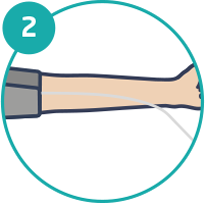Health Know-how
Blood Pressure Monitor
Ischemic Heart Disease
In global, IHD (Ischemic Heart Disease) affects around 126 million individuals (1,655 per 100,000), which is approximately 1.72% of the world’s population. Nine million deaths were caused by IHD globally.
In study, men were more commonly affected than women, and incidence typically started in the fourth decade and increased with age.
The global prevalence of IHD is rising. It is estimated that the current prevalence rate of 1,655 per 100,000 population is expected to exceed 1,845 by the year 2030.


Do you know Preeclampsia?
PREECLAMPSIA is a pregnancy complication characterized by high blood pressure and signs of damage to another organ system, most often the liver and kidneys.
PREECLAMPSIA usually begins after the 20th week of pregnancy or after giving birth.
Left untreated, PREECLAMPSIA can lead to serious — even fatal — complications for both you and your baby.
Systolic Pressure & Diastolic Pressure

Blood Pressure Classification
The traffic-color scale on Medisana Blood Pressure Monitor indicates your blood pressure level which is very easy to understand.
| Stage 3 Hypertension emergency |
SYS 130 ~ 139 mmHg DIA 85 ~ 89 mmHg |
High-Normal blood pressure |
SYS 130 ~ 139 mmHg DIA 85 ~ 89 mmHg |
|---|---|---|---|
| Stage 2 Moderate hypertension |
SYS 120 ~ 129 mmHg DIA 80 ~ 84 mmHg |
Normal blood pressure | SYS 120 ~ 129 mmHg DIA 80 ~ 84 mmHg |
| Stage 1 Mild hypertension |
SYS < 120 mmHg DIA < 80 mmHg |
Optima blood pressure |
SYS < 120 mmHg DIA < 80 mmHg |
| Stage 3 Hypertension emergency |
SYS 130 ~ 139 mmHg DIA 85 ~ 89 mmHg |
|---|---|
| Stage 2 Moderate hypertension |
SYS 120 ~ 129 mmHg DIA 80 ~ 84 mmHg |
| Stage 1 Mild hypertension |
SYS < 120 mmHg DIA < 80 mmHg |
| High-Normal blood pressure |
SYS 130 ~ 139 mmHg DIA 85 ~ 89 mmHg |
| Normal blood pressure | SYS 120 ~ 129 mmHg DIA 80 ~ 84 mmHg |
| Optima blood pressure |
SYS < 120 mmHg DIA < 80 mmHg |
Blood Pressure Information

According to World Health Organization, if your numbers are 140/90 or higher, you probably have HIGH BLOOD PRESSURE

Hypertension can cause serious damage to health. It can harden arteries and reduce the flow of blood and oxygen into the heart, causing CHEST PAIN (ANGINA), HEART FAILURE, and HEART ATTACK. High blood pressure may rupture or block arteries, supply blood and oxygen to the brain, and cause a stroke.

Different type of Hypertension
Primary Hypertension
About 90% of patients with hypertension are primary hypertension, the cause of which is unknown, generally related to genetics, mental stress and obesity.
Secondary Hypertension
Mainly caused by other diseases or changes in the body, such as kidney disease and endocrine disorders.
Coat Hypertension
More commonly known as white coat syndrome, is a phenomenon in which people exhibit a blood pressure level above the normal range, in a clinical setting, although they do not exhibit it in other settings.
As you age, the risk of high blood preesure also increases. People who eat high-salt foods for a loing time, smoke, drink alochol, and lack of exercise are also at risk.

Step 1
Slip the cuff over the bare left upper arm just above the elbow approx. 2 cm distance. Ensure the cuff is not too tight and space inside should be 2-fingers wide.

Step 2
The tube should run along the center of the inner arm towards the palm of hand.

Step 3
Relax your body and rest your arm lightly on table. Don’t move or talk during measurement. Measurement takes place at heart level.

Step 4
Using the same arm for measurement, usually the left arm.

Step 5
Make sure you are in a comfortable and relaxed position. Do not tighten arm muscles during measurement (any pressure can result in an incorrect reading).

Step 6
If the cuff is too loose or not adhered well, it will cause erroneous readings.

Step 7
If the measurement is performed continuously, it should be separated by several minutes to allow the accumulated blood to flow away.











